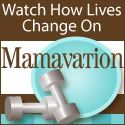Lack of Eye Protection From UV Rays May Cause Damage Now and Later in Life
Prevent Blindness America Warns Public on Possible Immediate and Lasting Effects of UV Damage
 CHICAGO (April 29, 2009) – Ultraviolet (UV) rays are well known for their damaging effects on the skin. One area of the body that sunscreen cannot protect is the eyes. Prolonged exposure to UV rays can cause “sunburns” to the eye, also known as photokeratitis. The painful condition may result in temporary loss of vision for 1-2 days. In addition, the presence of pterygium, a growth of tissue that forms on the white of the eye, is in direct correlation to the amount of UV exposure that the person has been subjected to. Without treatment, this condition may require surgical treatment.
CHICAGO (April 29, 2009) – Ultraviolet (UV) rays are well known for their damaging effects on the skin. One area of the body that sunscreen cannot protect is the eyes. Prolonged exposure to UV rays can cause “sunburns” to the eye, also known as photokeratitis. The painful condition may result in temporary loss of vision for 1-2 days. In addition, the presence of pterygium, a growth of tissue that forms on the white of the eye, is in direct correlation to the amount of UV exposure that the person has been subjected to. Without treatment, this condition may require surgical treatment.
The damaging effects of UV rays may not develop until years later. In fact, UV damage is cumulative and has been linked to cataracts and macular degeneration later in life. The delicate skin around the eye and the eyelids is also susceptible to UV damage. According to the Office of Air and Radiation at the Environmental Protection Agency, basal cell carcinoma is the most common type of skin cancer to affect the eyelids and may appear on the lower lid, in the corners of the eye and under eyebrows.
Prevent Blindness America, the nation’s oldest volunteer eye health and safety organization, has declared May as UV Awareness Month to help educate the public on how to protect their eyes. Fortunately, protecting the eyes and vision is easy and does not have to be expensive. No matter what time of year it is or what the weather forecast is, sunglasses that block 100 percent of UV-A and UV-B rays should always be worn in conjunction with a brimmed hat. While UV-A has lower energy, it penetrates deep into the eye and may injure the macula, the part of the retina responsible for sight in the center field of vision. UV-B radiation is presumably more dangerous and is mainly absorbed by the cornea and lens of the eye and can damage those tissues.
Wrap-around sunglasses are best as they protect the eyes and the skin around the eyes. Some contact lenses may offer UV  protection but they can’t protect the entire eye and the skin around it.
protection but they can’t protect the entire eye and the skin around it.
“When we head outside to enjoy the great outdoors, we all need to remember to protect one of our greatest gifts—our sight,” said Hugh R. Parry, president and CEO of Prevent Blindness America. “We adults need to be good examples for our children and encourage them to get in the habit of protecting their vision for years to come.”
According to the American Optometric Association, children are at a greater risk of UV damage because the lenses of their eyes are more transparent, which allows more short wavelength light to reach the retina. Parents looking to purchase sunglasses for their children should remember to buy sunglasses with the proper UV protection. Sunglasses without UV protection may shade the eyes but actually cause the pupils to dilate, allowing in even more harmful rays.
And, children’s glasses should be made of unbreakable polycarbonate to fit their active lifestyle. The frames should be bendable and the lenses should not pop out. The child should try the sunglasses on and make sure they shield enough of the eye above, below and on the sides.
For more information on the dangers of UV exposure and more information on how to choose the best sunglasses for adults and children, please visit preventblindness.org/uv or call ![]()

![]()
![]()

![]()
![]()
![]()
![]()
![]()
![]()
![]() (800) 331-2020
(800) 331-2020![]() .
.
About Prevent Blindness America
Founded in 1908, Prevent Blindness America is the nation's leading volunteer eye health and safety organization dedicated to fighting blindness and saving sight. Focused on promoting a continuum of vision care, Prevent Blindness America touches the lives of millions of people each year through public and professional education, advocacy, certified vision screening and training, community and patient service programs and research. These services are made possible through the generous support of the American public. Together with a network of affiliates, divisions and chapters, it's committed to eliminating preventable blindness in America. For more information, or to make a contribution to the sight-saving fund, call




















0 comments:
Post a Comment